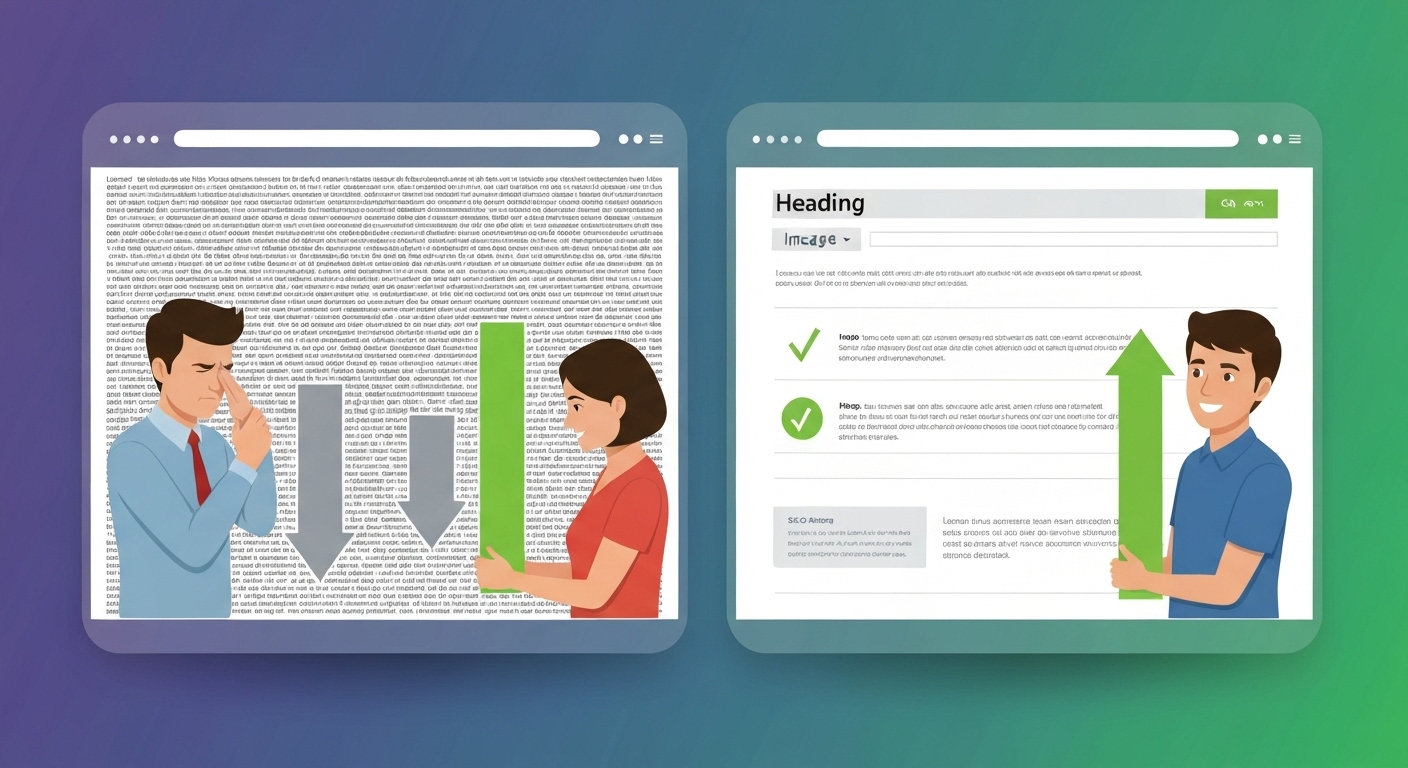Improving Readability for Better Rankings : A Comprehensive Guide
Improving readability for better rankings is crucial in today’s competitive online landscape. Search engines prioritize content that is easily understood and engaging for users. This article will explore proven strategies to enhance your content’s readability, ultimately boosting your SEO performance.
What is Content Readability and Why Does it Matter for SEO?
Content readability refers to how easily a text can be understood by the average reader. High readability means the text is simple, clear, and concise. Search engines like Google consider readability as a ranking factor because they aim to provide users with the most relevant and accessible information. Content that is difficult to read can lead to higher bounce rates and lower dwell times, negatively impacting your search engine rankings. Prioritizing readable content enhances user experience, signals quality to search engines, and contributes to improved visibility.

Key Metrics for Assessing Readability
Several metrics can help you assess your content’s readability. Common readability scores include:
- Flesch Reading Ease: This score ranges from 0 to 100, with higher scores indicating easier readability. A score of 60-70 is generally considered ideal for online content.
- Flesch-Kincaid Grade Level: This score estimates the grade level required to understand the text. For example, a score of 8.0 means an eighth-grader should be able to understand the content. Aim for a grade level of 7-9 for most online audiences.
- Gunning Fog Index: This formula calculates the years of formal education a person needs to understand the text on the first reading. Lower scores are better.
Utilizing tools that measure these metrics is essential for improving readability for better rankings.

Practical Tips for Improving Readability for Better Rankings
Here are actionable strategies to make your content more readable and SEO-friendly:
1. Use Shorter Sentences and Paragraphs
Long, complex sentences can overwhelm readers and decrease comprehension. Break down lengthy sentences into shorter, more manageable units. Similarly, keep paragraphs concise, focusing on one main idea per paragraph. This improves visual appeal and makes the content easier to digest. Aim for an average sentence length of 20 words or less.

2. Choose Simple and Familiar Words
Avoid using jargon, technical terms, or overly complex vocabulary unless your target audience is highly specialized. Opt for simple, everyday language that is easily understood by a broad audience. When technical terms are necessary, provide clear and concise definitions or explanations.
3. Employ Active Voice
Active voice is generally more direct and easier to understand than passive voice. In active voice, the subject performs the action (e.g., “The dog chased the ball”). In passive voice, the subject receives the action (e.g., “The ball was chased by the dog”). Active voice makes your writing more engaging and easier to follow. For enhanced content readability, prioritize active voice.
4. Use Headings and Subheadings
Headings and subheadings break up large blocks of text, making the content more scannable and visually appealing. They also help readers quickly identify the main topics and subtopics. Use descriptive and keyword-rich headings to improve SEO. Improving readability for better rankings often involves strategic use of headings.
5. Incorporate Bullet Points and Lists
Bullet points and numbered lists are excellent for presenting information in a clear and organized manner. They make it easy for readers to quickly grasp key points and takeaways. Use lists to summarize information, outline steps, or highlight benefits.
6. Optimize Font Size and Line Spacing
Ensure that your font size is large enough for comfortable reading. A font size of 16px or larger is generally recommended for body text. Adequate line spacing (around 1.5) also improves readability by preventing the text from appearing cramped.
7. Use Visual Aids
Incorporate images, videos, and other visual aids to break up the text and enhance engagement. Visuals can help illustrate complex concepts, provide context, and make the content more memorable. Ensure that all visuals are relevant to the topic and optimized for SEO. To effectively implement SEO writing, consider the integration of images and other forms of media to elevate readability.

8. Proofread and Edit Carefully
Typos, grammatical errors, and awkward phrasing can significantly detract from readability. Always proofread your content carefully before publishing. Consider using a grammar checker or asking a colleague to review your work.
9. Understanding Your Audience for Improved Content Readability
Knowing your target audience is paramount in crafting readable content. Tailoring language, complexity, and tone to resonate with their comprehension levels ensures higher engagement and retention. Conduct thorough audience research to ascertain their knowledge base, interests, and preferred communication styles. This knowledge facilitates creating content that speaks directly to them, fostering a deeper connection and enhancing the overall user experience. A deep understanding of the target audience is critical when improving readability for better rankings.
10. Using Readability Tools to Enhance Website Readability
Harnessing the power of readability tools is an integral step toward enhancing website readability. These tools offer invaluable insights into the comprehension level of your content, providing actionable data to refine your writing style and vocabulary. By evaluating metrics like Flesch Reading Ease and Flesch-Kincaid Grade Level, you can objectively assess the simplicity and clarity of your text. These objective assessments facilitate the creation of content tailored to meet the specific needs and comprehension abilities of your target audience. Implementing consistent evaluation will yield substantial enhancements to your content’s overall readability. flashs.cloud offers comprehensive strategies to improve SEO and readability.
The Impact of Readability on User Engagement
Readability directly impacts user engagement. When content is easy to understand, users are more likely to stay on your page, read more of your content, and share it with others. Higher engagement rates signal to search engines that your content is valuable and relevant, leading to improved rankings. Poor readability, on the other hand, can lead to frustration, higher bounce rates, and lower dwell times, negatively impacting your SEO. For enhanced user engagement, make readability a priority.
Monitoring and Measuring Readability Improvements
After implementing changes to improve readability, it’s crucial to monitor and measure the impact on your SEO performance. Track key metrics such as bounce rate, dwell time, organic traffic, and keyword rankings. Use analytics tools to identify areas for further improvement and refine your content strategy accordingly. A/B testing different versions of your content can also help you determine which readability strategies are most effective. Consistently monitoring and measuring allows for refining SEO writing for optimal results. Access more information about evaluating content quality on usa.gov.
Conclusion
Improving readability for better rankings is an ongoing process that requires attention to detail and a focus on user experience. By implementing the strategies outlined in this article, you can create content that is both engaging and easily understood, ultimately boosting your SEO performance and achieving your online goals. Remember to regularly assess your content’s readability, monitor your SEO metrics, and adapt your strategy as needed.
HOTLINE
+84372 005 899


